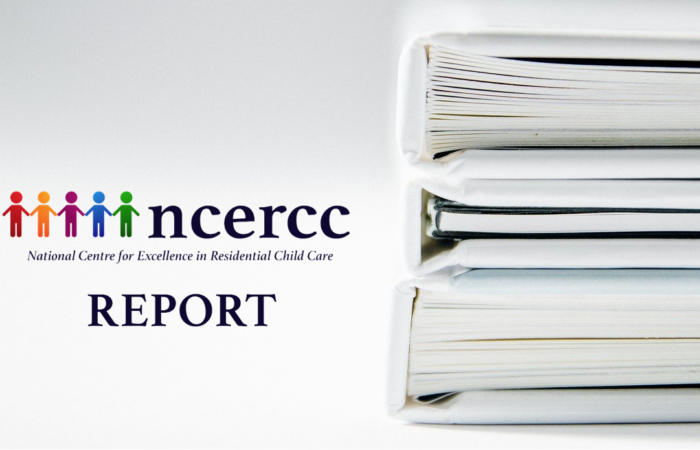
“We’ve compared the markets now’s the time to compare the meerkats”
This blog is about keeping our eyes open and not being distracted. It’s about what does the research and analysis say?
When considering the financing of children’s social care, we need the benefit of calm factual analysis. It is essential that we act from understanding the information rather than the extracted headlines.
Revolution Consulting have been conducting work for national and local government, and providers, they research, they provide consultancy and advice. At times NCERCC works with them. It’s perhaps worth stating that in my approaching 50 years in residential childcare I have had 15 years each in local authority, private and voluntary organisation, and some self-employment as consultancy too.
Revolution Consulting are the ‘go to’ researchers commissioned by all parties because they have a consistent concentrated analysis. There have their detractors who rather than evaluate the thoroughness of the work see they speak for one set of interests or another. You cannot say that looking at the work of Revolution Consulting.
This preamble is important because it is important to hold on to what we know amongst the comment by government, local government and providers regarding the market and children services, especially fostering and children’s homes. Each is trying to persuade a readership. Interestingly there is little comment from providers. They may feel they have already responded in their publications and submissions to the Care Review and CMA. It may be that they are making media releases continuously. From experience trying to get any media interest in practitioners or providers viewpoints is exceptionally difficult. The impossible happens rarely, and then is gone, subsumed beneath the weight of other comment, publications. It’s the insistency, persistency and consistency of message that gets noticed.
What is different about this blog is that it not going to look at government, local government or provider views.
For the record NCERCC view is for a definancialised national children’s care service, centrally funded, regionally planned and locally accountable. There are several methods discussed across the web. NCERCC will be reporting on our analysis of them soon. We approach all current ownerships looking at ‘do they give good care for children’. It allows a critique of all perspectives.
NCERCC’s analysis is that marketisation and commodification are deep within current thinking, policy, and practice throughout children’s services. Markets are but one expression of much deeper dynamic.
The work of Revolution Consulting has been referenced in recent reports. Revolution Consulting have had need to seek correction of its work as what has been attributed is not what was said. Important details were lost in translation, or interpretation.
A 40% increase in costs over 6 years has been described as ‘indefensible profit making’. It equates to a compound interest of less than 6%.
In an attempt to stand clear and independent Revolution Consulting make these comments concluding with this statement in the July 2021 issue of CYPNow (available on Revolution Consulting website (Home – Revolution Consulting (revolution-consulting.org))
“To dispassionately and forensically consider the way the private sector (NCERCC adds: all sectors because local government and voluntary organisations are involved and implicated in the commodification and marketisation) contributes to the children’s social care sector we need calm factual analysis homes of both positives and negatives we need appropriate levels of understanding of the evidence available followed by intelligent informed strategic to how to interact Commission procure and partner with your provider bodies. This is the debate we need to have.”
In the article Revolution Consulting make clear what it is that has been misunderstood or misinterpreted, certainly miscommunicated.
Understanding the rise in fees at the higher end has to be understood by also including that it is widely appreciated that needs have grown in intensity and frequency and require intensifying resources, often smaller homes and higher staffing.
(NCERCC has always posed the question: intensive or expensive? A home and a placement can be either, and both. It is important to be able to understand the reasons).
Revolution Consulting explains that is necessary to add in tom costings the direct inflationary factors: employment legislation, wages, national insurance, pensions, working time. These are beyond the control of local authorities and providers.
(NCERCC has written previously about now the national state is absent in the current analysis yet has played a part in the current situation by its action and inaction).
NCERCC would also point interested readers to the work of the PSSRU on Unit Costs. Project information | PSSRU
But what’s all this about meerkats?
Think about the change you want to engender in residential childcare and how you might go about it.
Change comes when people feel resilient and confident. To get people to the point they can accept the challenge of change and connect with it requires confidence building needed not undermining. Change has to feel possible. A secure environment enables learning and adaptation. For change to occur you need to create space, contain but don’t constrain, don’t inhibit, don’t impinge.
This is why the current persistent public and professional negativity towards residential childcare is a worrying phenomenon. It is not connected to the theory and practice we know to be practical and productive.
Many social work/care organisations use positive psychology ideas. The focus is on positive events and influences (happiness, joy, inspiration, love) and positive states (gratitude, resilience, compassion). Commonly added to this are motivational counselling, coaching and mentoring. The No Wrong Door model, an Innovation Programme evaluated project, uses these, and offers a way of thinking about utilising them in thinking about organisational change too. There is opportunity for the thinking to use in government action too.
The Frontline programme has six one to one leadership sessions with a coach and 4 group sessions with a coach, and the programme is stated as being relational and systemic in practice. Again, the learning could be drawn across to government action.
The Behavioural Insights team, extensively embedded in government, have the vision of a ‘future where people and communities can thrive in a world shaped by a deep understanding of human behaviour.’ Briefly, the approach is based on the idea that interventions aimed at encouraging people to make better choices for themselves and society will be more successful if they are based on insights from behavioural science. Behavioural psychology tells us that you change a behaviour by adaptation or replacement of a negative with a positive one. You do so by encouraging positives not by addressing negatives.
Turning the Curve is an approach to change that has been popular in children’s social work/care policy and programmes. It asks that you measure and forecast what will happen of you nothing differently, that you analyse the story behind the data, that you identify existing and new partners who have a role in improvements sought, all the factors that works to address the contributing factors are addressed in a comprehensive action plan. There are a lot of propositions currently but little action planning, and even less done collaboratively.
So, what is this to do with meerkats?
Meerkats are always on the look-out for danger. They are ready for fight, flight or freeze. They stretch skywards to keep an eye on the danger. When danger comes close the disappear underground.
Think about the change you want to engender in residential childcare and how you might go about it. Is what is happening at the moment likely to lead to the change you desire?

